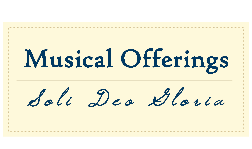Publication Date
12-17-2015
Document Type
Article
Keywords
Cristobal de Morales, Spain, Renaissance, sacred music, flamenco, New World, Christianity, Judaism, Islam, interaction of music cultures, Mozarabic rite, muwashshah, Spanish Inquisition, Native Americans
Abstract
Every musical culture grows and developed under a specific set of influences, whether political, philosophical, or geographical. Varying sets of influences create likewise varying types of music. Spanish music, in particular, enjoyed an especially unique array of influences during the fifteenth century. My presentation explores these influences. How did the interaction of Spain’s three major religions—Christianity, Islam, and Judaism—affect musical development? How did the newly unified government, ruled by Ferdinand II of Aragon and Isabella I of Castile, influence the musical culture? How did Spain’s discovery and conquest of the New World facilitate the spread of Spanish music beyond its borders?
These three factors made Spain distinct from other Western nations during the fifteenth century. In my presentation, I first describe the interaction of Christianity, Islam, and Judaism. This synergy created a rich, collaborative community of shared musical ideas, prompting the development of both sacred and secular genres. Next, I address the influence that Spain’s unified government exerted on the musical culture. Historically, politics have played a substantial role in the development of music. Spain is distinctive in this respect because most other nations during this time were not unified under one ruler, whereas Spain was. This unique governmental structure in turn affected the musical culture. Lastly, I will explain how the spread of Spanish music and its interaction with native tribes in America impacted its development, both within and outside Spain’s borders. Spain was particularly poised to both exert their influence and be influenced by the different people groups they encountered in the New World. These three factors would create a uniquely Spanish music culture.
Volume
6
Issue
2
Article Number
1
DOI
10.15385/jmo.2015.6.2.1
Recommended Citation
Pfeifer, Lindsey E.
(2015)
"Development and Dissemination: Deliberations on Spanish Renaissance Music,"
Musical Offerings: Vol. 6:
No.
2, Article 1.
DOI: 10.15385/jmo.2015.6.2.1
Available at:
https://digitalcommons.cedarville.edu/musicalofferings/vol6/iss2/1
Creative Commons License

This work is licensed under a Creative Commons Attribution-Noncommercial-No Derivative Works 4.0 License.
Disclaimer
The CedarCommons repository provides a publication platform for fully open access journals, which means that all articles are available on the Internet to all users immediately upon publication. However, the opinions and sentiments expressed by the authors of articles published in our journals do not necessarily indicate the endorsement or reflect the views of Digital Services, the Centennial Library, or Cedarville University and its employees. The authors are solely responsible for the content of their work. Please address questions to the Digital Services staff.
Copyright
© 2015 Lindsey Pfeifer. All rights reserved.
Included in
Ethnomusicology Commons, Fine Arts Commons, Musicology Commons, Music Performance Commons, Music Theory Commons

